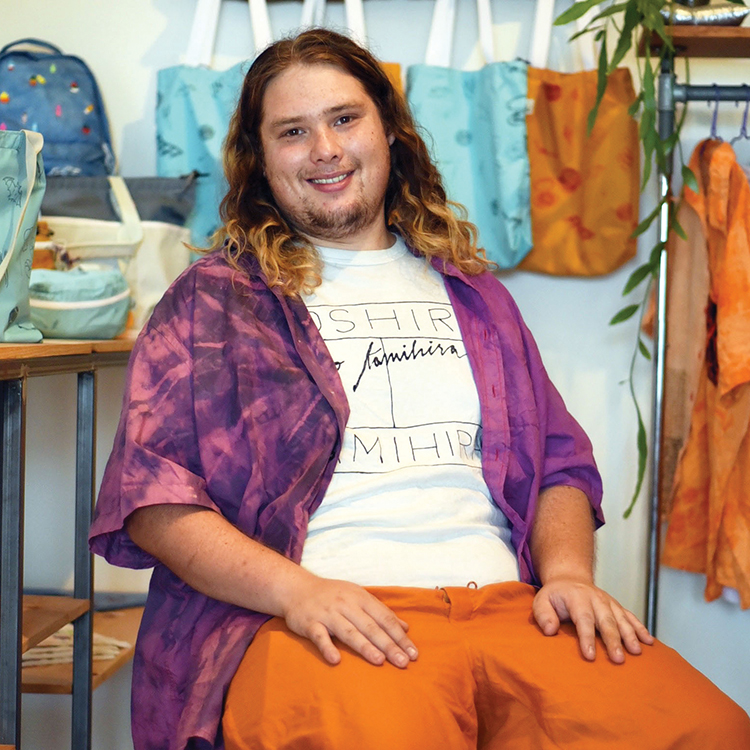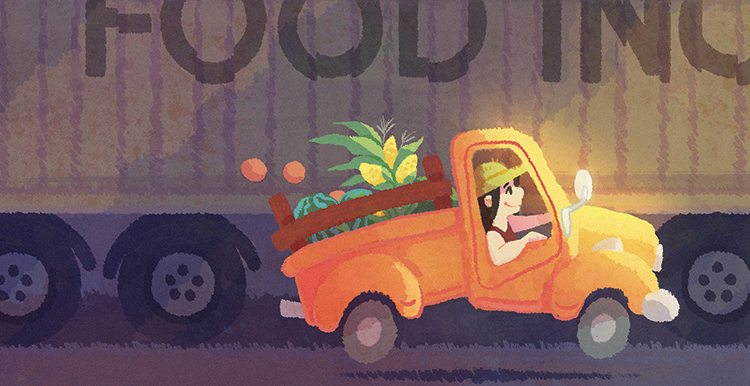The Kamihira gallery straddles the line between art showcase and makerspace
Photo by Megan Matuzak
By John Henry Scott
Artist Tosh Kamihira opened the Kamihira gallery and store at Frankford and Sargent last year, and since then has sought to be “an outlet for local makers.” It’s not uncommon for people with a fine art background or education to make the shift into the world of craft and function, and Kamihira is on that path.
Across our own city, many artists work with both craft and art, the former lending itself not only to making money but also to changing the way people interact with their everyday objects. According to artist Thomas Pontone, who has curated a group show at the space and is also at work on a series of minimalist stools, “It seems more justified to have an object in your home if it serves a purpose.”
Jessica Hans, a studio artist based out of East Falls who also makes functional flower vases, explores the arts-vs.-craft line in her work as well.
“I’ve always teetered on the edge of functional and sculptural, allowing the work to retain its sense of usefulness,” she said.
Since opening, Kamihira has also featured gallery shows from artists such as Alyssa Piro, John Mitchell, Will Haughery and Will Kelly. The shop sells merchandise from local brands such as 1733 (handcrafted bags), Dog Pasta (ceramics) and Kamihira Tees (shirts designed by Tosh and his brother Leks).
Kamihira’s friends, Walter Wynne and Wai-Jee Ho, also reckon with the line between art and function in their studio practice. Together, they make handcrafted furniture, upholstered with fabric woven on the premises. They call their Port Richmond studio WW Woodworking.
“I realized during my first year in art school that I could never be an artist, that I needed the constraints of functionality,” said Ho.
“I had a similar reaction at school,” said Wynne. “I needed to step away from the conceptualized aspect of everyone else’s work and root myself in some sort of craft-based process.”
The couple met at Cooper Union, the prestigious New York City art school, an environment that led both of them to think about the expressive nature of art versus the functional nature of craft.
Ho and Wynne moved to Philadelphia (Wynne’s hometown) shortly after their graduation and set up the studio a few years later.
Ho weaves and prints the designs on the fabric that upholsters Wynne’s furniture.
“The weaving began as a response to the furniture Walt was making,” she said. “We were trying to find fabric for the furniture and kept hitting a wall.”
“Time and material for the cushions began to outweigh the cost of making the chair,” added Wynne.
Weaving their own fabric allows Ho and Wynne to have a greater degree of control over the furniture-making process in terms of the materials they’re using.
Pieces from WW Woodworking are made to order. Clients select an existing form from the website and are free to customize it with choice of color and (to some extent) wood. For now, according to Ho and Wynne, WW is more a studio than it is a business, focused on developing ideas instead of turning a profit.
For Kamihira, the line between art and craft is becoming irrelevant, as long as he keeps working himself as he tries to make a go of the gallery.
“As far as craft goes, I think it’s really important for me to make things,” said Kamihira. “Whether I define it as craft or art has no bearing in my mind. I find that people in my position as a gallerist/shop owner often lose track of what it is that we’re doing and what [a gallery setting or marketplace] means to makers if we are not ourselves making things.”
The Kamihira Gallery, 2527 Frankford Ave.







